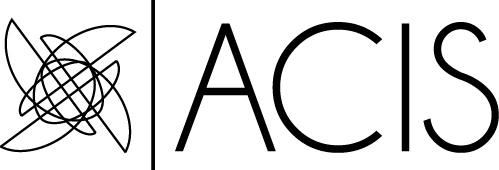
In his epic history of The Novel vol. I (2007), Franco Moretti urges literary critics to “make the literary field longer, larger, and deeper.”[1] It seems that Irish Studies, or at least the American Conference for Irish Studies, is listening to Moretti following the recent international meeting of ACIS at the University of Notre Dame. Looking back across the range of papers and panels, I am struck by the increasingly international geography that is expanding the map of Irish literary studies. What united this myriad of excellent papers was not simply an interest in non-Irish Spaces, but an expansion of what it means to call a text “Irish.” Is it simply that the text is written in or about an island off of an island off of the western coast of Europe? Or has the definition of an Irish text shifted to be made “longer, larger, and deeper” the more we expand the map of Irish Studies?
Dr. Liam Lanigan’s paper on Paul Murray’s The Mark and the Void (2015) seems to point the way forward by reinserting not simply the history or experience of Ireland and Irish people, but the difficulty of mapping globalization itself. The connections to Moretti are rife and fruitful, drawing our attention beyond the non-space of the Irish International Financial Services Centre but to the non-space of fictional African countries and to the very real space of Wall Street. The expansion of the map of Irish Studies, like all maps, must be challenged for its overt ideology and the ideologies embedded within it. As Moretti writes, “[e]ach genre possesses its own space, then—and each space its own genre: defined by a spatial distribution—by a map.”[2] But the inverse, then, must surely also be true: by focusing on specific spaces do we remain blind to certain novels? And, what, then, do we do with a novel like The Mark and the Void, which, following Zola, is explicitly about the difficulty of writing about money? To what space do we confine it?
This same question emerges again in the context of early nineteenth-century Irish writing, as Maureen O’Connor demonstrated. Sydney Owenson’s The Missionary (1811) attempts to bridge not only disparate faith traditions, connecting Hinduism to a sort of humanist universalism, but also bridges spaces in a way that is remarkably characteristic of Owenson, which is to say political. Thus, the expansion of the map of the Irish novel and Irish Studies more generally is not exclusive to the post-2008 crash landscape; it can and should challenge us to re-think the geography of earlier centuries.
To some extent, Ian Campbell Ross issued a similar call in his 2011 article “Mapping Ireland in Early Fiction,” where he invokes Moretti before examining the geography of Vertue Rewarded (1693) and Sarah Butler’s Irish Tales (1716).[3] But where better than a conference on the “Worlding of Irish Studies” to re-commit our field to that expansionary vision. The ACIS conference, and several specific panels, papers, and roundtables, renewed this conversation in an exciting manner. Carrying it forward, somewhere off the map and beyond the Pale, is the next step in truly Worlding Irish Studies.
[1] Franco Moretti, The Novel , Vol. I: History, Geography, and Culture (Princeton: Princeton University Press, 2007), x.
[2] Franco Moretti, The Atlas of the European Novel, 1800-1900 (London: Verso, 1999), 35.
[3] Ian Campbell Ross, “Mapping Ireland in Early Fiction,” Irish University Review 41.1 (2011): 1-4.
